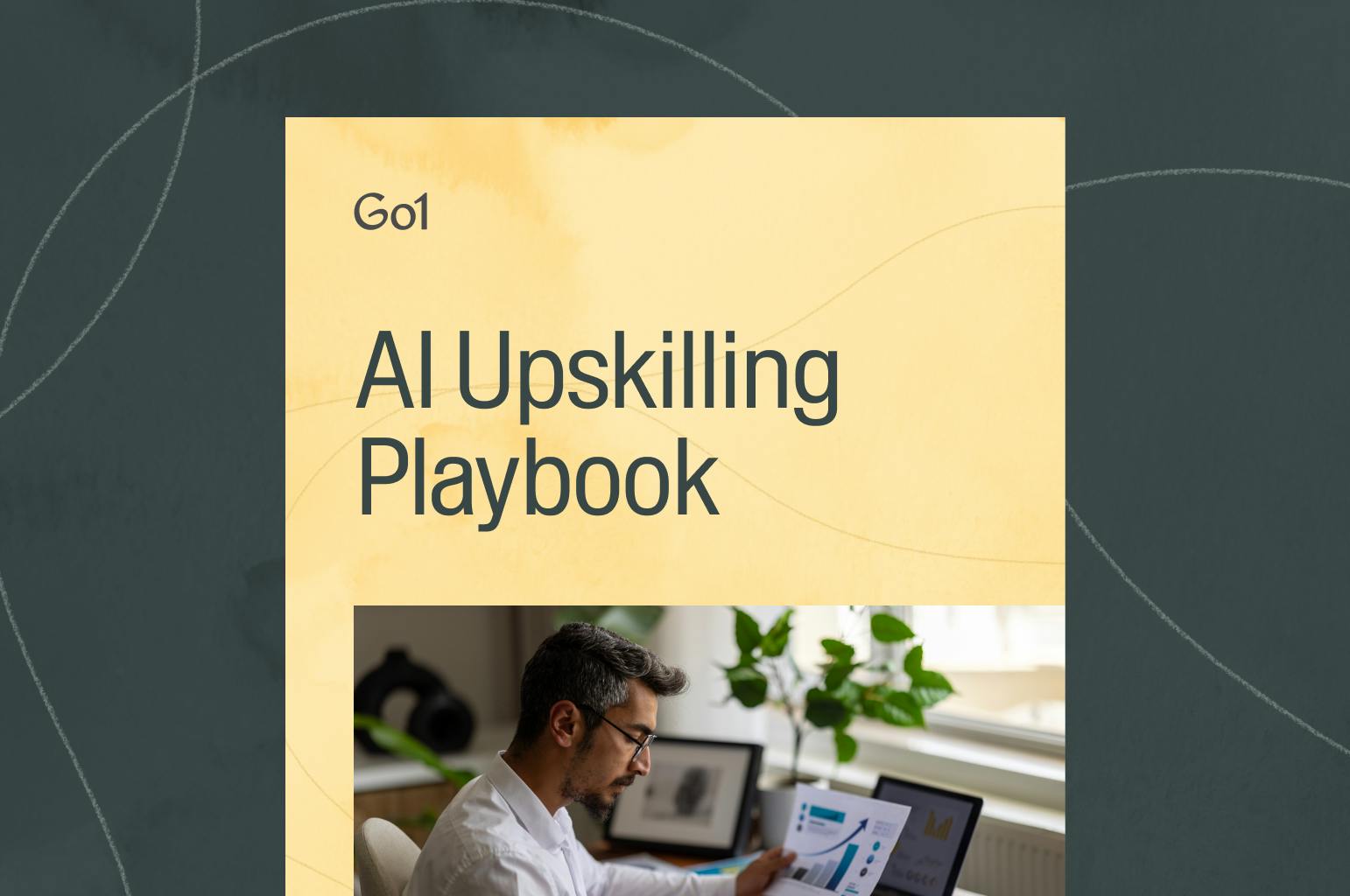Choose the right employee training tools for equitable learning

Effective learning and development within organizations can lead to greater productivity and retention. However, most programs aim to develop hundreds or thousands of employees at once, failing to integrate equity into learning to mitigate disparities in opportunity and outcomes. And when learning and development programs don’t uplift and empower every individual employee — or rather, create a gap in learning among specific groups of employees — organizations can quickly be at risk of high turnover.
In this article, we’ll explain what equity in L&D looks like, how one-size-fits-all approaches fall short, and how to choose and implement the right tools and techniques to improve your learning culture.
What's equity in L&D?
Equity in L&D initiatives ensures that every employee, regardless of their background, identity, or role, has equal access to relevant learning opportunities.
Unlike one-size-fits-all training programs, which cater to the majority and disregard individuality — like competing priorities, learning habits, cultural background, and more — equity in L&D ensures that learning opportunities aren't only relevant, but custom-fit, too.
How do one-size-fits-all L&D programs contribute to inequitable learning outcomes?
One-size-fits-all training programs can exacerbate learning disparities, resulting in inequitable development: certain groups can be left behind while others advance much faster.
While every workforce is different, one-size-fits-all programs tend to overlook individual obstacles and necessary context around learning, like:
- Job roles: In global enterprise organizations, employee roles are incredibly varied. For example, one-size-fits-all L&D programs often focus on office workers, and don’t create time for frontline employees to learn.
- Learning preferences: A standardized training program usually deploys learning material in just one format, leaving some employees to struggle while others thrive.
- Skill levels: Every person comes to their role with different skills. Most programs, though, don’t account for that, leading some to feel bored with content and others overwhelmed.
- Culture and language: Most standard L&D programs aren’t suitable for a variety of different languages and don’t speak to a breadth of employee cultural experiences.
- Personal constraints: From competing priorities like caretaking or mental health conditions, one-size-fits-all programs tend to ignore individual hurdles to learning, offering little flexibility in time, format, or pace.
How to choose the right training tools for your employees
Technology can play a critical role in closing workplace learning disparities. When looking for the right L&D software for your organization, look for tools that support:
- Access: Choose technology that can create greater access to learning materials and a variety of formats (i.e., bite-sized modules, self-paced modules, asynchronous and synchronous learning, etc.), to accommodate any kind of schedule.
- Inclusion: Tools in your tech stack should have the capabilities to create custom training that matches each employee’s unique learning preferences, skill level, language, and goals for more equitable outcomes.
- Cross-collaboration: Look for tools that facilitate peer-to-peer learning, knowledge sharing, and mentorship to connect employees across locations and skill levels for greater cultural competency.
- Continuous improvement: Built-in analytics are critical for tracking employee progress, identifying gaps, and measuring the effectiveness of training programs — and iterating where needed.
- Scalability: Your software should be capable of growing and changing as your organization does. When comparing tools, be sure they offer regular updates, flexible pricing, and optional add-ons.

How to implement equitable L&D software into your organization
Selecting and Implementing the right tools to mitigate disparities in learning outcomes can be overwhelming. To make the process simpler, follow these few best practices.
Identify learning disparities
To choose the best technology for your organization, you’ll need to first understand your organization's learning gaps. To do this, try:
- Diving into data: Conduct a thorough analysis of your organization's L&D data, including filtering outcomes by demographics like age, location, job level, and more. You might even drill down into gaps in engagement, like completion rates, knowledge retention, skill acquisition, and career advancement.
- Talking to employees: Survey employees and conduct focus groups. Encourage anonymous feedback through specific channels to understand any criticism, complaints, or concerns about accessing and benefiting from current L&D programs.
Empower managers
Managers are crucial agents for developing employees, including promoting and facilitating equitable learning and development, especially in global organizations.
Mainly, managers can act as on-the-ground proponents of equitable learning. With the right tools, managers can monitor their teams’ learning outcomes and recommend relevant learning opportunities to their direct reports for more detailed oversight.
Continuously gather feedback
Your workforce is ever-changing, so your employee training programs should be too.
To make sure your program is consistently meeting employee needs and closing learning gaps, regularly survey employees about their experiences, use real-time reporting, or create focus groups with underrepresented employees.

Create a change management plan
If your organization is moving from a traditional one-size-fits-all program to a more personalized one, the adjustment can be hard on the L&D team and the employees they serve.
To help employees adapt to a new learning program, develop a strategy, like a change management plan, for rolling out new L&D technologies. And for even more success, identify and train "champions" from diverse backgrounds to promote adoption across the organization, too. For L&D teams looking for support, lean on your LMS, HRIS, or content providers for resources and tools that can help with the transition.
Offer the right support
Training and support are crucial. When rolling out your new L&D tools, ensure that all employees, especially those who might be less comfortable with technology, have the resources they need to fully utilize the software and onboard appropriately. This might include one-on-one training, comprehensive guides, tutorials, or “office hours” with people leaders.
Understand that L&D is just one tool for equity
L&D technology is a tool to enable equity, not the solution itself.
It’s important to remember that in order to create more equitable learning programs and outcomes, your organization needs to have a broader strategy for equity, too. That might mean establishing policies for equitable career advancement, pay transparency, and parental leave.
Moving toward a more equitable L&D future
Fostering equity in learning can dictate not just the success of individual employees but an organization as a whole.
With the right tools and implementation, any organization can ditch the one-size-fits-all programs and finally close learning gaps for good — and foster a diverse, inclusive, and equitable workforce for everyone.
Experience the future of learning with one, easy-to-integrate content subscription for all of your compliance, training, and upskilling needs. Schedule a demo with our team to explore Go1's innovative features and benefits for learning and development.
Related Articles

Application Guide: How to use the Go1 AI for L&D Maturity Assessment to assess our workforce AI capability

AI upskilling made clear: A practical guide to building an AI-ready workforce

Go1 welcomes PepTalk

5 Data-Backed Insights Shaping the Future of AI in Workplace Learning

Train smarter, spend less
Train smarter,spend less
Connect with a Go1 expert to explore the best training options for your organization—no pressure, just solutions that work.